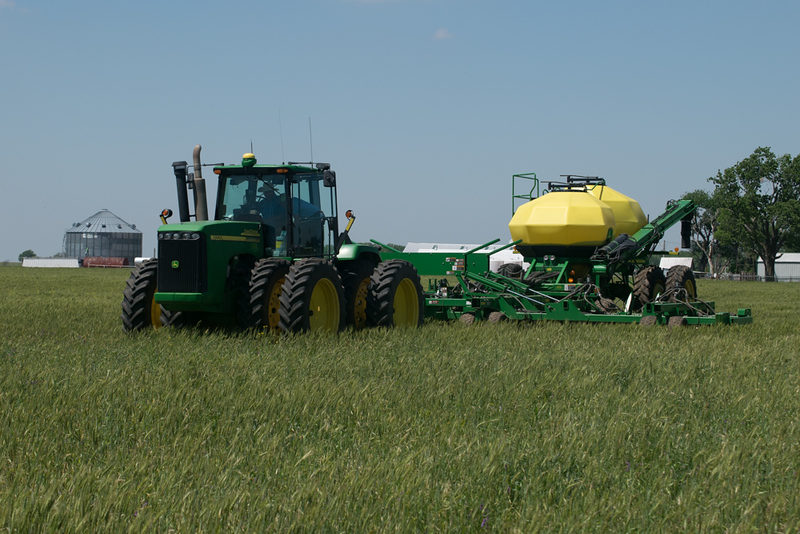Compiled by No-Till Farmer Editors
This web page has been assembled by editors at No-Till Farmer, Strip-Till Farmer and Cover Crop Strategies to serve as a source for growers looking for options on prevented-planting acres in the U.S. and potentially find sources of disaster aid.
Cover crops are an especially attractive option at this time because the federal government has relaxed some management rules and deadlines to give growers more options — but even corn and soybeans are a possibility in unplanted fields as a cover (see article below).
Just a reminder — if you’re using crop insurance or aren’t sure how a payment program applies to your farm operation, make sure to check with your local Farm Service Agency (FSA) office, insurance agent or crop advisor before making any management decisions.
USDA RESOURCES
** USDA Prevented/Delayed Planting Resources Page
Did heavy rainfall, flooding, or other weather events prevent or delay planting on your farm? USDA is here to help farmers navigate challenges when it comes to prevented planting, offering:
- Prevented planting coverage through USDA-administered crop insurance policies;
- Technical and financial assistance in planting cover crops, a practice common on lands unable to be planted to an insured crop.
Additional Resources:
- RMA Prevented Planting webpage
- RMA Prevented Planting Flooding frequently asked questions
- RMA Cover Crops webpage
- NRCS Cover Crops and Prevented Planting fact sheet
USDA Adds Flexibility for Cover Crop Management in Crop Year 2020
A press release from USDA explains how the 2018 Farm Bill mandated changes to the treatment of cover crops, including adding more flexibility to when cover crops must be terminated while remaining eligible for crop insurance.
STATE INFORMATION
ILLINOIS
OHIO
ONTARIO
KANSAS
NORTH DAKOTA
SOUTH DAKOTA
GREAT PLAINS
- Cover Crop Options for Prevented Planting Acres
- Check Herbicide Restrictions Before Planting Cover Crops
MORE PREVENT-PLANTING RESOURCES
Opportunities for Cover Crops in Prevent Planting Situations
Unfortunately there are some years when fields just don’t get planted to a cash crop. But this can open up an opportunity to plant a wide range of species of cover crops to make soils more productive in the future, says Steve Groff.
Questions to Consider for Prevent-Planting Cover Crops
NRCS conservation agronomist shares important points on deciding when to seed cover crops and which species to choose.
Pros & Cons for Cover Crops in Prevented Planting
When making the decision to prevent-plant, no-tillers must assess what course of action will be the most profitable.
7 Steps When Prevent Planting Cover Crops
USDA’s recent announcement on 2019’s final haying and grazing dates being adjusted from Nov. 1 to Sept. 1, and eligibility being extended to include silage, haylage and baleage, has opened the door to better utilization of prevent plant cover crops.
[Podcast] Managing Herbicides When Planting Cover Crops
When planting cover crops, there are three factors to keep in mind in the context of using herbicides to control weeds: the herbicide half-life, the amount of rainfall received and the amount of organic matter.
Check Herbicide Restrictions Before Planting Cover Crops
Cover crops offer many benefits. But including them in a rotation adds another layer of complexity that may be unfamiliar.
Summer Annual Cover Crops for Prevented Planting
Summer annual cover crop species are ideal for prevent plant situations, but each come with their own concerns. Here are some things to consider.
Watch for Nitrate Toxicity When Feeding Cover Crops to Cattle
Haying and grazing season is underway across North Dakota, with much of the forage supply consisting of small grains and cover crops. Although these crops offer flexibility in cropping systems and a great source of livestock feed, they could pose a risk of nitrate toxicity, says the University of Nebraska.
Cover Crop Mixes that Produce High-Quality Forage
After a few weeks of talking about cover crop options on prevented planting acres that could not be hayed or grazed until Nov. 1, the date changed to Sept. 1. North Dakota State Extension soil health specialist Abbey Wick discusses mixes that produce high quality material for haying or grazing. This can provide some additional revenue without affecting prevented planting payments if utilized after Sept. 1.
Make Cover Crop Decisions Easier with Free NRCS Chart
The NRCS Cover Crop Chart includes information on 66 crop species that may be planted individually or in cocktail mixes, with information on growth cycle, relative water use, plant architecture, seeding depth, forage quality, pollination characteristics, and nutrient cycling are included for most crop species.
Recommendations for Prevent Planting Corn, Soybeans as Cover Crops
Keith Johnson, Purdue University professor of agronomy, says some producers with prevent plant acres are considering using corn or soybeans as a cover crop, a practice recently approved and supported by the Extension Field Crop and Natural Resources Conservation Service (NRCS) Specialists. Here are some tips to make it work.






